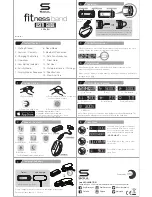
Performance Features
Effects
3-15
assume that you wonÕt normally want more than one effect to be active). You can activate the
sends to both blocks, however, by pressing
FX-A
and
FX-B
at the same time.
Activating or deactivating the sends to each effect block this way is a performance feature only;
the sends return to their preset state as soon as you select another program or setup. If you want
a send to be inactive (or inactive) when you select a program or setup, youÕll need to edit the
effect settings for that program or setup, then store the changes. See
Making Effects Active at
Program or Setup Selection
on page 4-25.
Note
: In Internal Voices mode, Sliders A and B control the wet/dry mix of FX-A and FX-B. With the
slider up, the corresponding effect is at full strength (100% wet); with the slider down, the effect is
inaudible (0% wet). If youÕre not sure youÕre hearing an effect, try moving these sliders up and down a
few times. See Wet/Dry Mix on page 3-16 for more information.
Changing Effects
Each effect block has a selection button (
Select
) next to its activation button (
FX-A
and
FX-B
).
Use these buttons to start the process of changing effects. In the following example, weÕll select a
different effect for FX-A. WeÕll do this in Internal Voices mode, since this enables us to use
Slider
A
to adjust the wet/dry mix. WeÕll also use Program
000 Stereo Grand
, since it has a
distinctive effect assigned to FX-A.
1. Make sure that you can hear the effect you want to change; the send to FX-A must be
active, and the wet/dry mix must be high enough for the effect to be audible. If necessary,
press the
FX-A
button to light its LED and activate the send to FX-A. Move Slider
A
all the
way up to set the wet/dry mix to
100%
.
2. Press the
Select
button next to the
FX-A
button. Its LED lights to indicate that FX-A is the
current effect block. The display should resemble this:
FXA|Select|:Voices
61|Classic|Chapel|
3. Use any data entry method to change the effect displayed on the bottom line (the Alpha
Wheel is probably the easiest). You should hear a change almost immediately, although
you might notice that the effect takes a second or so to reach its full level.
Changing effects actually puts the PC2 into the Effects Editor, where you can make other
changes to the effect settings (weÕll discuss the Effects Editor further in Chapter 4). Unless you
store your changes, the effect assignment reverts to its preset state as soon as you select another
program or setup. See
Saving Effects
on page 4-23 to learn how to preserve your changes.
Muting Effects
Suppose youÕre in the studio, and your recording engineers are using their own external effects,
or maybe a global reverb setting for all channels. You want to silence all your effects and/or
reverb temporarily, but you donÕt want to make any lasting changes to the programs or setups
youÕre playing. You can quickly disable the PC2Õs effects so that the PC2 is completely dry no
matter what youÕre playing. By the way, this doesnÕt disable the sends; theyÕre still active. Effects
muting is more like a bypass.
Just press the activation and selection button simultaneously for the effect block you want to
mute. The display will brießy indicate that corresponding effect block is muted. To remove the
















































